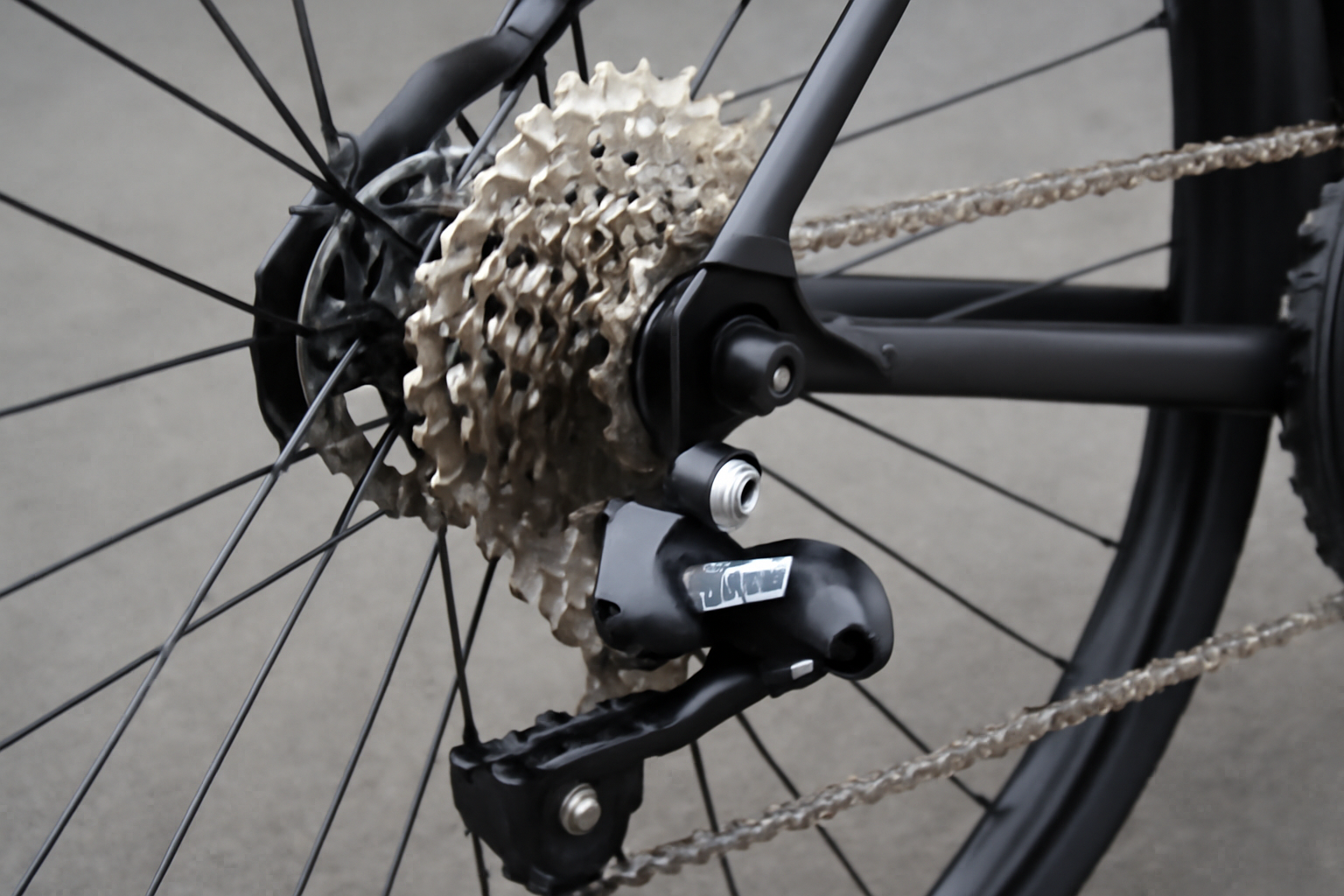Bike gears are essential components of a bicycle, allowing cyclists to adjust their pedaling efficiency to various types of terrain and riding conditions. Climbing a hill or cruising down a flat road, understanding how do bike gears work is the key to optimizing your cycling life.
Gears allow cyclists to regulate their effort, make pedaling uphill or maintaining speed downhill easier. With a properly adjusted gear system, riders can conserve energy and tackle different challenges on their cycling journey.
In this post, we’ll explore how bike gears function and the importance of choosing the right gear for your ride
1. What Are Bike Gears?
Gears for bikes are mechanical components that allow the cyclist to change the resistance and speed of pedaling by adjusting the gear ratio. They do this by changing the chain from one size cog or sprocket to another, which alters the effort of pedaling. That is, gears control how hard or easy it is to pedal by changing the gear ratio in such a way that cyclists are able to achieve an optimal cadence according to terrain. Low gear facilitates easier pedaling for hills, while high gear allows for greater speed when pedaling downhill or on flat terrain.
2. The Function of Gears in Cycling
The primary function of bike gears is to facilitate or strenuous pedaling so that the cyclists can handle terrain variation and conserve energy while on long journeys. On flat ground, a higher gear offers the velocity at the cost of less effort.
When climbing inclines, however, changing to a lower gear reduces the effort and allows the rider to maintain the same cadence without tiring. With efficient gearing adaptation based on the terrain, cyclists are able to ride farther without fatigue, resulting in a more enjoyable and sustainable journey.
3. Types of Bike Gears
The two primary types of bike gears, derailleur and hub, each have unique benefits and mechanisms. Derailleur gears are the most common, on the majority of modern bikes, while hub gears are used in city cruisers and commuter bikes.
Derailleur gears have an external system that changes the chain between a number of cogs, while hub gears possess a sealed, internal system inside the wheel hub for low-maintenance and low-friction shifting of the gears. Both are excellent in their own situations according to riding conditions, bike type, and personal choice.
3.1 Derailleur Gears
- Overall Use: Derailleur gears are employed by most modern bicycles, especially road bikes and mountain bikes.
- Components Used: The mechanism consists of a derailleur, chainrings, and a freewheel or cassette. The derailleur shifts the chain from cogs on the cassette.
- Gear-Shifting Mechanism: The rider changes the gears with shifters, which pull a cable to move the derailleur to shift the position of the chain.
- Gear Range: Derailleur systems possess wide gear ranges, and there is flexibility to tackle various terrain types (e.g., hills, flat areas).
- Advantages: Smooth shifting and wide range of gear ratios, supporting various cycling conditions and rider types.
- Disadvantages: Greater maintenance is necessary since it exposes the system to dirt and weather conditions, and could be undermined by chain derailment.
3.2 Hub Gears
- Common Application: Common on commuter bikes, urban bikes, and hybrid bikes.
- Internal Mechanism: The gears are found inside the rear wheel hub to prevent damage and dirt.
- Shifting Mechanism: Shifting is done by way of either a twist-grip or thumb shifter, which operates an internal mechanism to change the gear ratio.
- Ease of Handling: Can shift under no load or under pedal power, which makes them extremely easy to handle, especially under city riding conditions.
- Advantages: Low maintenance with sealed system, less prone to weather or dirt damage, and generally more durable.
- Disadvantages: More limited gear range than derailleur systems, and less efficient in terms of transmitti
4. How Do Bike Gears Change?
Bike gears change through the operation of shifters, which control either a derailleur or an internal hub, allowing the chain to move across cogs or sprockets. When you shift, a cable connected to the shifter pulls or releases tension, prompting either the derailleur or internal mechanism to adjust the chain’s position. On derailleur systems, the movement of the derailleur changes the gear by moving the chain to a larger or smaller cog.
For hub gears, the shifter adjusts an internal gear system that alters the resistance without the need for an external derailleur.
4.1 Derailleur Shifting Mechanism
- Shifting Action: A rider shifts gears using a handlebar-mounted shifter (trigger, thumb lever, or twist grip).
- Cable Tension: The shifter moves a cable that alters the tension, causing the derailleur to shift the chain to a larger or smaller cog.
- Derailleur Movement: The derailleur moves laterally to either engage a larger cog (harder pedaling, good for flat terrain) or a smaller cog (easier pedaling, ideal for hills).
- Shift Timing: The best way to shift is to pedal steadily so as not to damage the drivetrain or chain.
- Gear Range: Offers a broad gear range with multiple front and rear gears, making it ideal for varying cycling conditions.
4.2 Hub Gear Shifting Mechanism
- Internal Gear System: Hub gears have a sealed system inside the rear hub, where shifting happens internally, without moving parts exposed to the elements.
- Shifting While Pedaling: Shifting can be done while pedaling or even while stationary, offering a smooth and simple cycling experience.
- Shifter Options: Hub gears typically use a twist-grip or thumb shifter to control the internal mechanism, which adjusts the gear ratio.
- Maintenance-Free Shifting: Since the system is sealed, it requires less maintenance than derailleur systems and is less affected by external factors like rain or dirt.
- Gear Range: Hub gears generally offer fewer gears than derailleur systems but are ideal for urban commuting or leisurely rides.
5. How Gear Ratios Affect Cycling Performance
Gear ratios are significant in how easily a rider can pedal and the speed at which they can ride, determining the overall cycling performance across different types of terrain. The gear ratio is determined by dividing tooth count on the chainring by tooth count on the cog.
An easy gear ratio (e.g., small chainring with large cog) is easy to pedal with, ideal for mountain climbing. A higher gear ratio (for example, a large chainring and small cog) gives faster speeds on the flat ground but is more tiring to pedal. The right gear ratio helps riders in their quest to maximize their performance and conserve energy.
6. Benefits of Using Bike Gears
Bike gears come with numerous benefits, such as improved efficiency, an improved capacity to manage pedaling effort, and the ability to conquer a variety of varying terrains easily. With the right gearing, the cyclist can learn to accommodate what nature requires, whether that is shifting to a lower gear to tackle a hill or to prepare for acceleration on flat roads.
Gearing helps to maximize energy conservation by allowing the rider to maintain a comfortable pace. It also prevents muscle fatigue as the rider can divide their effort equally over time. Finally, because bike gear is adaptable and flexible, it improves the overall cycling experience.
7. Shifting the Gears Properly
To optimize your utilization of the bike gears, you should know when and how to shift to avoid damage to the drivetrain and improve your cycling experience. Here is one tip: shift into the gears before you need them, especially as you approach a hill or feel you will need added power. Prevent slipping under hard pressure or when stationary, as this is likely to put tension in the drivetrain. Smooth, consistent pedaling and shifting also prevent sudden changes that will lead to slipping of the chain. Regular maintenance, like lubricating the chain and inspecting the derailleur, also ensures smooth gear shifts.
8. Bike Gear Common Issues
As with all mechanical components, there is always a possibility that bike gears slip, skip, or get out of alignment, but the overwhelming majority of problems can be easily fixed by doing some work. The most frequent problem is when the chain skips or won’t properly engage with the cogs because the chain is stretched or clogged.
Shifting issues can also be triggered by misaligned derailleur or deformed teeth on the cassette. Regular maintenance through cleaning and lubrication of the gears can avoid most problems. If this is not the case, then maybe it is time to replace the chain or tweak the derailleur to ensure smooth shifting.
Conclusion:
Knowing how bike gears function can revolutionize your cycling experience, making it more efficient, smoother, and ultimately more enjoyable. With the right gear system information and right maintenance, cyclists are able to ride on various surfaces freely, maintain speed, and conserve energy. As a pro or an enthusiast amateur, there is no greater way to make every bike ride more enjoyable and comfortable than to master the art of gear shifting so that you maximize your bike performance and your trip.

I am Ryan Ford, a mountain biking enthusiast who loves to explore the outdoors. I also like to go on adventures with friends and anything else that involves being outside. I love my bike because it gets me out of the house and gives me an opportunity to enjoy nature.

